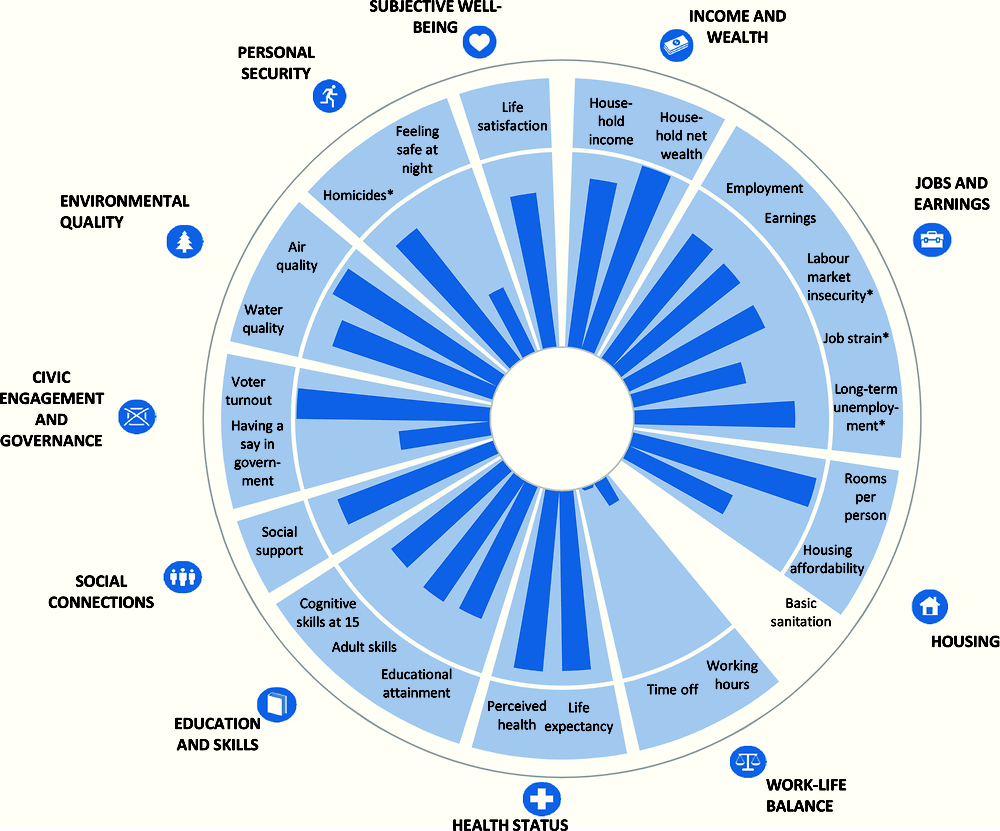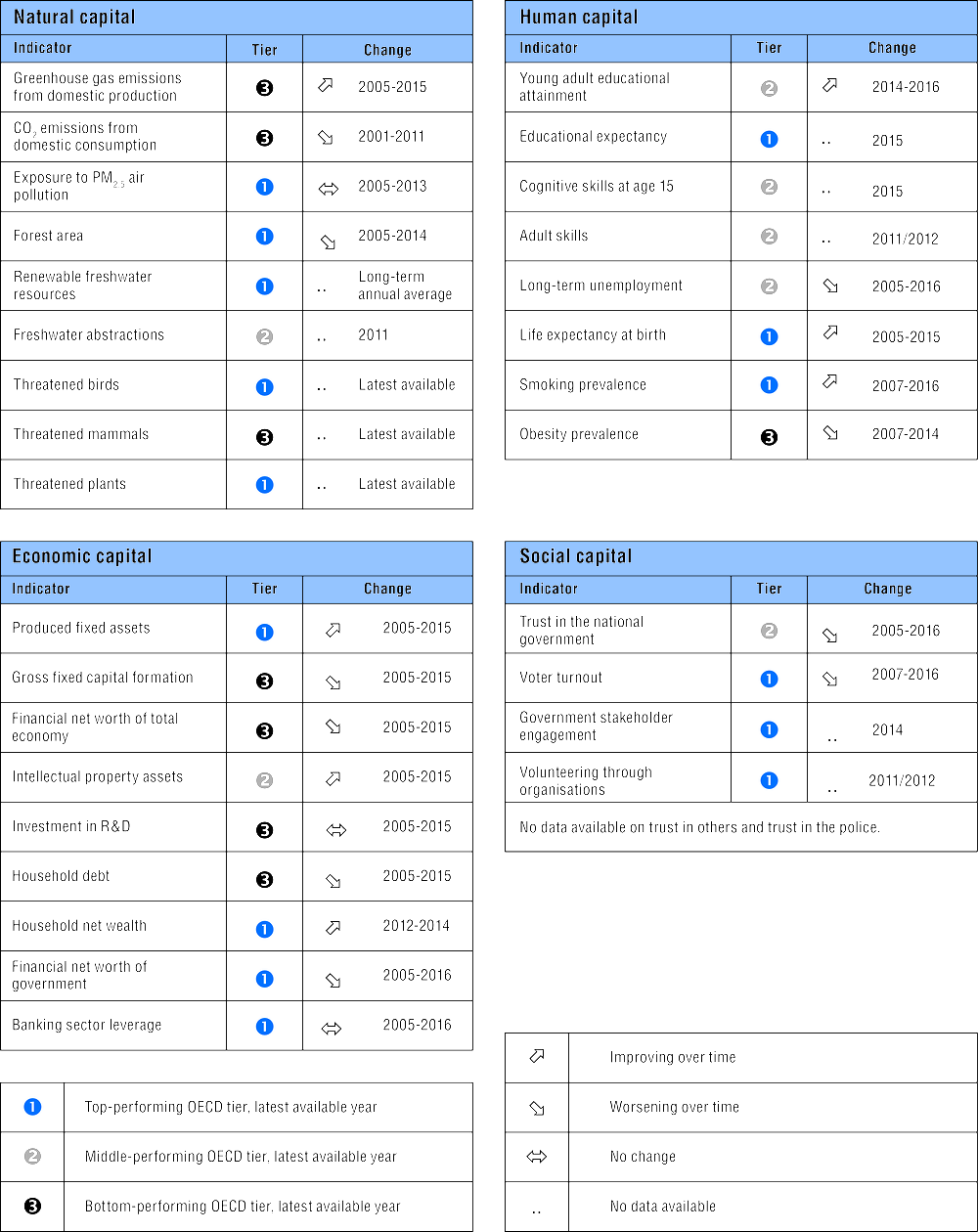How's life in Australia?
In general, Australia performs well across the different well-being dimensions relative to other OECD countries. Air quality is among the best in the OECD, and average household net adjusted disposable income and household net wealth were among the highest in the OECD in 2015 and 2014 respectively. Despite a good performance in jobs and earnings, Australia lies below the OECD average in terms of work-life balance: Australian full-time employees reported having 30 minutes less time off (i.e. time spent on leisure and personal care) than those in other OECD countries, and more than 13% of employees regularly worked 50 hours or more per week in 2016. In terms of personal security, despite the comparatively low homicide rate, only 64% of Australians felt safe walking alone at night, compared to the OECD average of 69% in the period 2014-16. A high share of Australians report good levels of perceived health, although these data are not directly comparable with those of the other OECD countries, due to a difference in the reporting scale.


